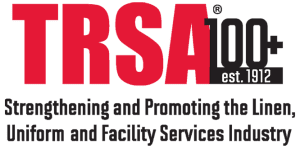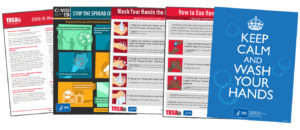Disaster Response Center
Combatting Hesitancy
Research recommendations from the Institute for Public Relations for vaccine-related messaging, with an emphasis on understanding vaccine hesitancy.
Sample Policy: Mandatory Vaccination
From the Society for Human Resources Management
Education and Training
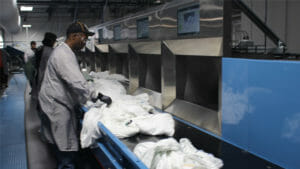
Six Cs of Handling Soiled Linen in a Healthcare Environment
Healthcare workers who handle soiled linen every day are tempted to dispose linen saturated with blood or other potentially infectious materials including COVID-19. This 13-minute training video is to provides an overview of the best practices to prevent injury and reduce the spread of infections in handling such materials. Workers and patients will benefit. The six steps (Cover, Collect, Contain, Consolidate, Clean, Cooperate) support improved patient care and promote a safety culture in healthcare facilities.
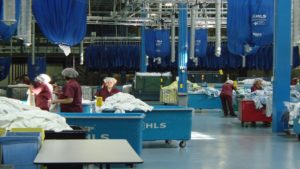
Precautions for Protection: Handling Soiled Healthcare Linen
Provides route associates, soil sorters, loaders and other affected personnel with a step-by-step process for applying Universal Precautions to prevent the spread of infections through safe handling of healthcare textiles throughout processing and delivery.
View Now (English) | View Now (Spanish)
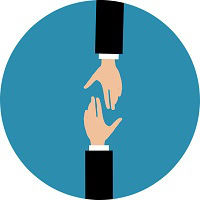 Reduce Anxiety by Addressing Workplace Needs and Building Meaningful Connection
Reduce Anxiety by Addressing Workplace Needs and Building Meaningful Connection
Employees are stressed by the impacts of the pandemic, personally or professionally, from being isolated, feeling anxious from venturing into the workplace and other reasons. Regardless of the source, employers can address your employees’ anxieties to ensure they feel supported and safe.
In this webinar, you will:
- Learn the most common workplace needs and how they show up in our behavior
- How to support employees to identify and discuss underlying needs
- Reduce anxiety in employees/team members by fulfilling workplace needs in ways you are most comfortable, and help them fulfill their own needs
Procedures from the U.S. Centers for Disease Control and Prevention (CDC) for protecting employees and controlling the spread of disease in workplaces.
CDC: Health and Safety Practices
Types of Masks and Respirators
Ventilation in Buildings
Cleaning and Disinfecting
COVID-19
Illustrated personal practices to control the spread of the virus and stay safe. Posters and blogs from the U.S. Centers for Disease Control and Prevention (CDC), National Institutes of Health (NIH), and Department of Human Health and Services (HHS).
CDC Personal Practices Posters
COVID-19 Quarantine vs. Isolation (Spanish)
Know the Symptoms (English) | Know the Symptoms (Spanish)
Stop the Spread of Germs (English) | Stop the Spread of Germs (Spanish)
Wash Your Hands the Right Way
How to Use Hand Sanitizer
Keep Calm and Wash Your Hands
While no enterprise is immune to disaster, emergency or catastrophe, laundering has its own combination of higher risks—fire, hazardous chemicals, defective boilers and other perils of a highly mechanized environment. Every laundry needs a comprehensive plan to deal with the aftermath of such disasters to salvage resources and honor commitments to customers.
This best practice was largely adapted from a TRSA publication, Recommended Professional Practices for Disaster Planning, authored by consultant Lucien Canton, previously emergency director for San Francisco city and county and regional hazard mitigation officer for the Federal Emergency Management Administration (FEMA). Consult Recommended Professional Practices, available in the TRSA Store, for more detailed advice on the steps described here.
Frequently Asked Questions
Linen
1. With a 6-hour active life on linen, would leaving potentially contaminated soil in bag/cart for 6 hours eliminate potential employee exposure? Any update on how long COVID-19 lasts on linens?
Standard hygienically clean laundering processes kill viruses,, preventing them from infecting you or others. When dealing with hard surfaces, a simple disinfectant should suffice-the EPA has posted a list of cleaners that should be effective at sanitizing surfaces after exposure to COVID-19. While the CDC doesn’t specifically outline any changes to your typical laundry routine, they do provide a list of best practices when doing laundry for someone who’s ill:
- Ideally, wear disposable gloves and discard them after each use. When using reusable gloves, only use those gloves for cleaning and disinfecting surfaces — do not use them for any other household purpose. Wash your hands immediately after using the gloves. If you aren’t using gloves when handling dirty laundry, be sure to thoroughly wash your hands afterwards.
- Try to not shake the dirty laundry. Shaking the laundry carries a possibility of dispersing the virus through the air.
- If possible, use the warmest water setting on your washer and ensure items are dried completely afterwards.
- Dirty laundry from an ill person can be washed with other people’s items.
- If possible, consider placing a bag liner in your hamper that’s disposable or can be laundered. Otherwise, ensure the hamper itself is washed and sanitized.
- Additionally, consider having the clothes you wear around the house separated from clothes you’ve worn while you were outside to protect the environment inside your home.
2. Why doesn't TRSA advocate for incineration of linens?
TRSA does NOT advocate for the incineration of linens. TRSA recommends following CDC and OSHA guidelines for the handling of COVID-19 linens. The directive is to follow Standard and Universal Precautions. Please refer to our video, Six Cs of Handling Soiled Linen in a Healthcare Environment, for guidance on handling soiled healthcare linen.
3. What are the thoughts about separating potentially contaminated linens at the hospitals and washing them separately?
Treat all linens as contaminated. Use standard PPE (gloves and gowns, and bag linen) to protect employees. These linens do not have to be washed separately. According to OSHA standards, normal laundry cycles should be used according to washer and detergent manufacturer recommendations.
For the laundry industry, CDC hasn’t recommended changes in normal laundry handling and processing of textiles. Appropriate time, temperature, chemical and mechanical action will kill viruses. CDC also hasn’t recommended changes in textile handling regarding employee exposure risk in sorting. Viruses usually do not live outside a live host for long periods, especially on porous surfaces like textiles, limiting the potential exposure risk to laundry personnel who will be handling the laundry hours or days after use.
4. Should we bag soiled hospitality linen?
Linen providers who support the healthcare market handle potentially infections materials daily. It’s always been understood that every piece of soiled linen be treated as if it were potentially infectious. In serving other markets, similar precautions like those implemented for the healthcare market are suggested. Also vital to infection control are standard transmission-based precautions (proper hand hygiene, PPE, handle textile and laundry carefully, clean and disinfect environment surfaces, etc.).
5. What is the proper way for healthcare facilities to turn in linen containing COVID-19?
Existing OSHA regulations specify that any linen saturated with blood or other potentially infectious materials (OPIM) should be placed in impermeable bags.
6. Do you have a truck or vehicle cleaning and disinfection checklist?
All Hygienically Clean Certified Facilities MUST follow the transportation guidelines for their specific segments. You may find these recommendations on the HygienicallyClean.org under the market-specific certifications standards.
Below is the recommendation for Healthcare under section 5.1.3.4. Transportation:
- The QA manual must describe in detail procedures for the following functions:
- The process for servicing accounts must be designed and executed to prevent cross-contamination.
- Service reps must be trained on pick-up/delivery.
- Items must be covered during transportation to prevent cross-contamination.
- Items shall be transported in designated and covered containers.
- Service trucks shall be cleaned on a regular basis to minimize infection and contamination.
- Trucks shall be swept out daily and decontaminated at least twice a month.
- Reusable cart covers must be cleaned after every use.
- Proper PPE and gloves must be worn at all times when handling soiled linen.
- All linen retrieved from a customer location and delivered to the soiled processing area must be cleaned prior to delivery to the customer.All clean and unused linen retrieved from a customer that maintains proper functional separation and is delivered to the clean processing area may be used for redelivery to the customer. Prior to redelivery, the linen must be rotated and restocked.
- A designated transition area with stated process controls must be identified to remove potentially soiled cart covers prior to delivering exchange carts to the clean processing area1
